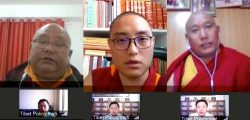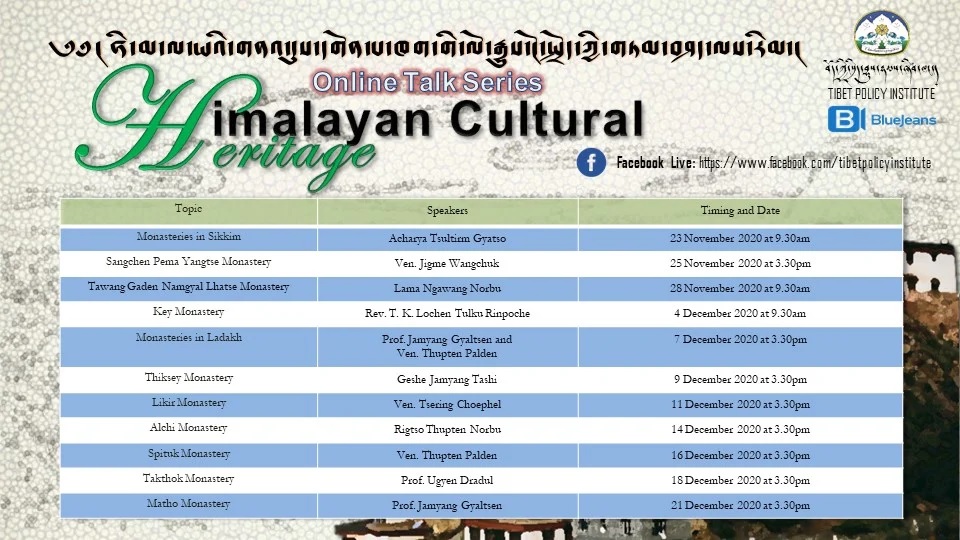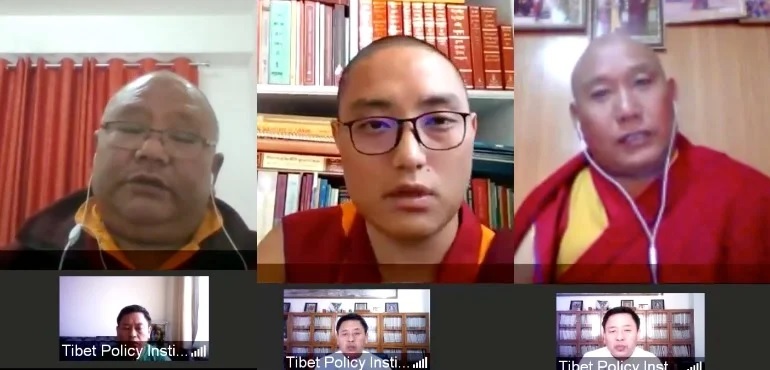
Dharamshala: The Tibet Policy Institute is hosting a talk series titled ‘Himalayan Cultural Heritage’ to spotlight the spiritually introspective, well-preserved 1000 year-long Buddhist traditions in the Himalayan region that have led to the establishment of many monasteries and inspired academic research and study into Buddhism.
The talk series features over 12 abbots, instructors, administrators, researchers, authors, and academicians who speak on the sacred monasteries of the Himalayan regions.
“Tibet Policy Institute has recently concluded a virtual conference on Tibet and the Himalayas: Past and Present. To follow up on this event, the Tibet Policy Institute is organizing the Online Talk Series on Himalayan Cultural Heritage featuring an introduction of sacred monasteries in the Himalayan regions,” said Director of the Tibet Policy Institute, Tenzin Lekshay.
“Such a program is designed to build our understanding on Himalayan culture and tradition which aim to facilitate aspiring researchers to develop their scholarship on Himalayan regions which are historically, culturally, and spiritually connected with Tibet for thousands of years.”
The ongoing talk series which began on 23 November has covered introductions on monasteries in Sikkim, Sangchen Pema Yangtse monastery and Tawang Gaden Namgyal Lhatse monastery. Acharya Tsultrim Gyatso, Dr Jigme Wangchuk and Lama Ngawang Norbu were the respective speakers.
Research fellow Karma Tenzin, TPI opened the first day’s talk with an introduction and said it aims to promote awareness among researchers and the general public about the rich cultural and Buddhist knowledge preserved by the Himalayan Buddhist institutions.
Karma Tenzin introduced the first speaker Acharya Tsultrim Gyatso, a researcher at Namgyal Culture Centre, who has published a series of articles and participated in many international conferences and presented papers as well.
Acharya Tsultrim Gyatso briefed on the geographic background of the region Dejong, the native name for Sikkim. Highlighting the territorial border it is connected to, with Tibet on the north, Bhutan on the east, Nepal on the west, West Bengal on the south, and which formerly, used to include parts of Nepal, and Bhutan, that is supported by historical records, about three times the size of its present territory. From a political view, in the 17th century, the kingdom was designated into a country that suffered invasion from foreign forces- Bhutan and Nepal in the Gurkha wars ending up losing the territories that also included Darjeeling which was lost to the British.
Speaking about the long-established roots of Buddhism, he said, “In the prehistoric times, when the undisturbed nature was believed to be ruled by mythical creatures, Tibetan Buddhism spread to Drenmojong, giving birth to a rich civilization. From a religious perspective, in the 8th-century pre-Buddhism era, Guru Rinpoche prophesized the struggle in Tibet and war, and advised the true followers and practitioners to move to the hidden land of Drenmojong, indicating the directions and other details”.
Acharya Tsultrim Gyatso shared about the gradual establishment of monasteries since the 17th century and the spread of Buddhism, and the designated sacred rivers, and described the most celebrated Bumchu Buddhist festival that involves foretelling of future according to the level of water inside the pot water.
The second speaker Dr Jigme Wangchuk spoke on the history of Sangchen Pema Yangtse monastery. Dr Jigme Wangchuk has completed his higher studies from Shantiniketan and is currently a university professor and General Secretary of Pema Yangtse monastery. He has also authored many books.
Dr Jigme Wangchuk presented on the history of the Sangchen Pema Yangtse monastery, describing its geographic dimensions to its religious ties with Tibetan from 8th to 13th century when the socio-cultural and religious practices grew stronger and the significance of the monastery in the region throughout history. He also spoke in-depth about the evolution of Buddhism in the region from the Pre-Buddhist era to the Terthons and the successive Dalai Lamas.
Commenting on the practising monk and nun population, he clarified that although the numbers are not definitive, around 400 monks and 150 permanent residents including teaching staff make up the total count at the monastery.
Lama Ngawang Norbu addressed the third-talk series on the history of Tawang Namgyal Lhatse monastery. Lama Ngawang Norbu has served at Tawang Monastery for more than 20 years in various capacities who marks his inspiration in His Holiness the Dalai Lama to achieve the message of the dharma.
In his presentation, Lama Norbu said Merag Lama Lodoe Gyatso founded the Tawang Namgyal Lhatse monastery in accordance with the wishes of His Holiness the 5th Dalai Lama. ‘Merag Lama Lodoe Gyatso had visited His Holiness to appeal his support and public cooperation in completing the renovation of the monastery in 1680-81. The monastery was built in fortress structure to prevent enemy infiltration.’
Lama Ngawang Norbu emphasized the special bond between the Dalai Lamas and the Mon-Tawang region, saying the region holds great significance from the 1st Dalai Lama Gendun Drupa to the 14th Dalai Lama.
Rev. T.K Lochen Tulku Rinpoche will address the fourth talk-series on Key Monastery on 5 December 2020, which will be followed by eight more speakers.
Watch all the upcoming talk series on ‘Himalayan Cultural Heritage’ on Tibet Policy Institute Facebook.


